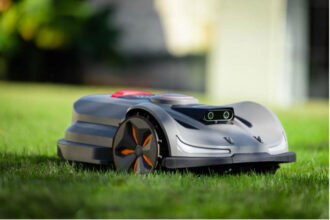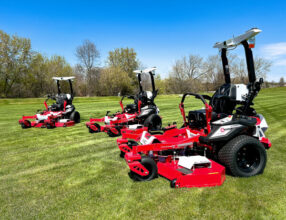Strive for obscene profits
By Bob Clements
For many of you, the season is fast approaching and you are busy getting everything ready to capture the business as it starts to come your way. In the past six months, my team and I have spent time in more than 100 dealerships, working on ways to make their service departments more efficient, their parts departments leaner and faster, and their wholegoods and rental departments more profitable. We constantly stress to dealership owners and managers that they are in business to make money and that more money is better than less money.
If you have attended any of my workshops, you know that I always try to impress upon the dealers in attendance that the goal is to make obscene amounts of money. In this article, I want to spend some time with you in each department and walk you through ideas that we have shared with other dealers this year.
From our perspective, a dealership’s service department is the most critical element to achieve success and maintain a high level of profitability across all departments. If the service department is not profitable and not running in a highly efficient manner, then your parts and wholegoods departments can’t produce the highest level of profitability.
Menu pricing
One of the simplest ways to improve profitability in a shop is to create menu pricing for more of your services. When most dealers think of menu pricing, they think in terms of annual maintenance, which is a great place to start.
When it comes to menu pricing, a frequently asked question of us is whether or not to include parts in the price or to price labor and parts separately. Our rule of thumb is to put the parts and labor together. Think of it like a value meal at one of your favorite fast-food restaurants. They don’t have the sandwich and fries priced separately from the drink; it comes as a package. Just like in the fast-food business, your customers like to know what they are buying and what the price is going to be — and you do this with your menu pricing.
To build menu pricing for annual service on a lawn tractor, first take a look at your business management system report that shows parts sales by volume. Find the average price for the top-five best-selling oil filters, air filters, fuel filters and spark plugs. Once you have discovered each part’s average price, you can use those numbers to add to your labor cost and set your menu pricing for that particular type of equipment.
In the case of the annual service for a lawn tractor, you might price out the labor at somewhere between 1 to 1.5 hours, add in the average part’s price, and then assuming you are going to sharpen and not replace the blades, you have set your menu price and are ready to go.
By using parts price averaging, you are going to come out well from a profit standpoint and give the customer what they want — which is a firm price. If you need to put on new blades or belts, those are in addition to the menu pricing and would be charged at your current pricing. It makes it nice, simple and easy for the customer to understand, as well as simple for you to sell.
Keep in mind that menu pricing is not just for annual maintenance. You can also take your common repairs and menu price them. Just as a car dealership has menu pricing at $69 per axle for replacing brakes, you could have a menu price of let’s say $69 to replace the belt on the deck for a lawn tractor. Again, figure out your average price of the top-five best-selling deck belts and your average time to replace a deck belt, and you are ready to go.
Base-rate pricing
Another great place to improve your service department’s profitability is to implement base-rate pricing on your standard repairs. Most of you are familiar with flat-rate pricing where you charge a flat rate of time for a specific repair. For example, let’s say you have a zero-turn mower that comes in and needs a spindle replaced. In flat-rate pricing, you might charge the customer six-tenths of an hour for the repair, plus parts. In base-rate pricing, we still use the flat rate of six-tenths of an hour as the base and then tack on additional time depending upon the condition of the equipment. If the mower is in excellent-to-good condition, the rate would be six-tenths; if it is in good-to-fair condition, it would be eight-tenths; and if it was in fair-to-poor condition, you would charge one hour. In the OPE industry, there is a big difference in time spent working on a piece of equipment that is in good condition compared to one that has been abused for the last three years and is in poor condition. Ask your techs about the difference between good and poor condition when it comes to equipment, and they will likely tell you that it is the difference between using an impact wrench or a torch to remove bolts.
Using a base-rate pricing model, you can easily pick up an additional one-tenth of an hour for each hour your tech produces. If you have a “B” level tech that is producing 1,500 billable hours per year — you will gain 150 hours of billable time per tech per year. If your posted shop labor rate is $65 per hour, you have produced an additional $9,750 per tech more than by using a conventional flat-rate pricing model.
Show and ask
Finally, when it comes to service departments, most people think that the most important thing to do is move equipment through as fast as possible. And on first glance, it makes sense — the more equipment you move through, the faster you are turning it around for your customers. But, as our dealers learn, the goal is not moving equipment through as fast as possible, but to maximize the dollars produced on it while it is in your shop.
If a customer brings in a piece of equipment for repair, your goal is to try to get them to let you service it while it’s on your air table or lift. You can take an hour service on a lawn tractor and do it in 30 minutes if you are already doing a repair on the equipment. It’s easy to pull the oil out of an engine while you are changing a spindle or replacing a belt.
How do you increase the amount of service you do in your service department? It’s as simple as “show and ask.” I cannot stress enough to those dealership employees checking in equipment how important it is to pull out the oil dipstick and show it to customers while they are standing next to the equipment. In most cases, the oil is pitch black, and at that point, if the employees simply ask, “When was the last time you had your mower serviced?” the customers will respond that they don’t remember. If the customers are asked, “Would you like to have the mower serviced while it is being repaired?” about half of them will say “yes.”
Apply this to your dealership. If half of your repair work included an annual service or spring tune-up as a part of the work order, how much would that add to your bottom line? If you did 1,000 repairs last year and 500 of those turned into an annual service at an average cost of only $100, you would have increased your service and parts sales by $50,000. Assuming you were at least averaging a 40-percent gross profit margin on parts and service, you would have added $20,000 net profit to your dealership. Keep in mind that would be an additional $20,000 that you could have pocketed at the end of the year, and it all happened because someone at your dealership pulled out an oil dipstick and showed it to customers 1,000 times. Not bad money for a little extra effort.
Build service and parts packages
Your parts department is another great place to strive for those obscene profits. How you do it depends on your current pricing strategy. First and foremost, if you are primarily an OPE dealer, you should be striving to get your average gross profit margin on OEM parts into the 48-percent range. Most, if not all, of our dealers are at least at 48 percent with many getting into the 53-percent range. If you are an OPE and Ag dealer, you should be working to get OEM parts into the 40-43 percent area. I won’t go into great detail on parts pricing in this article, but it’s important to be more aggressive on the low-end parts and work to be back at manufacturer list when you get around the $40-$50 range. Many dealers we start with just add 10 to 15 percent over list, and that’s not the best way to get the margins you are striving for, because you aren’t getting enough on the low end and are charging too much at the upper end.
One of the best ways to improve your parts profitability is to sell more parts, and the best way to do that is to work with the service department to create service packages that can be added to the wholegoods as they are sold. As a dealer, your goal is to at least offer the customer the ability to purchase a service package with each piece of equipment you sell. From the 21-inch mower to the 72-inch zero turn, when you sell to a customer, the best time to get them interested in service is while their equipment is nice, shiny and new.
Play on emotion
A high percentage of the people who invest in equipment want to keep it looking and working in perfect condition, and when they buy it, is a great time to offer a discount on their first service. I would happily give a 15-percent discount on the first service if the customer purchased it up front. It improves your cash flow, and guarantees you work in your shop during the slow season. I would encourage you to create a one-, two- and three-year service package for each of your models and religiously ask all of your customers who purchase equipment from you if they would be interested in keeping “their new investment in new condition.” Again, many will not be interested, but if just 25 percent say “yes,” you’ve made more money and improved your profits.
Put package prices on equipment
When it comes to selling your service packages, clearly list the package information on your price tag. Again, think like a car dealer. Every new car has a window sticker that shows the base price and then a list of the options with a final price. There is no reason you can’t take the same approach on your equipment. Have your normal price on the top of the price tag, but add at least a simple service and parts package to create a second price.
Remember, you are not in the business to just get by. You have the right to expect that all the time, energy and money that you invest into your dealership will give you the necessary profit you need to have the life and personal freedom that owning your own business brings.
Bob Clements is the president of Bob Clements International, Inc., a consulting firm that specializes in the development of high-performance dealerships. His organization works hands on with dealerships throughout North America, helping them attain the personal freedom and financial wealth all owners strive to achieve. For more information, contact Bob Clements at (800) 480-0737 or bob@bobclements.com or visit his Web site at www.bobclements.com.



